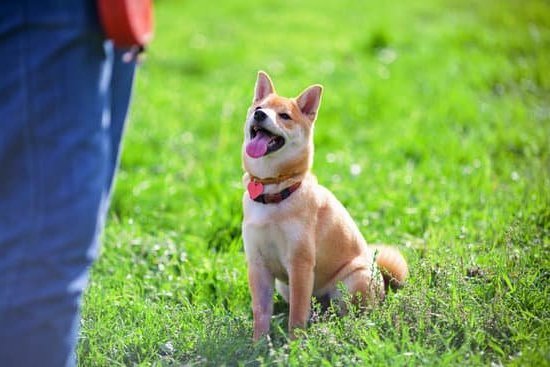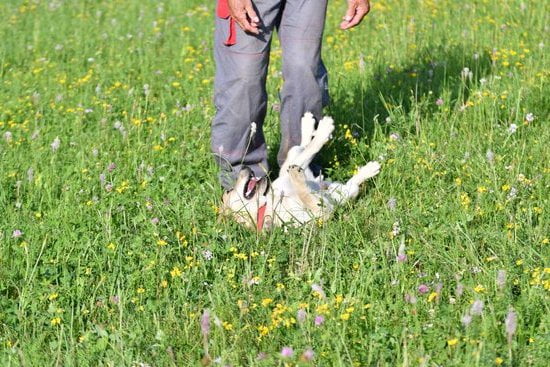Training a dog to be friendly to strangers is an essential skill that can greatly improve the well-being of your furry friend and enhance your relationship with them. Socialization plays a crucial role in shaping a dog’s behavior towards unfamiliar people, making it vital to understand the importance of this process.
By introducing your canine companion to various environments, experiences, and individuals from an early age, you can help them feel more comfortable and confident when interacting with strangers.
A dog that is friendly towards strangers not only fosters a welcoming environment at home but also provides a sense of security to their owners. Building positive relationships with new people can benefit your pet in numerous ways, including improved social skills, reduced anxiety in unfamiliar situations, and increased opportunities for mental stimulation and physical exercise. Additionally, training your dog to be friendly to strangers can prevent aggression or fear-based behaviors towards visitors or new acquaintances.
Before embarking on the journey of training your dog to be more sociable with strangers, it is crucial to assess their current behavior towards unfamiliar individuals. Understanding any existing fear or anxiety-related issues can help tailor your approach to training and set realistic expectations for progress. By implementing positive reinforcement techniques, controlled exposures, and consistent interactions with new people, you can gradually build your dog’s confidence and socialization skills while addressing any underlying concerns they may have.
Benefits of Having a Dog That Is Friendly to Strangers
Having a dog that is friendly to strangers can offer numerous benefits for both the pet and the owner. One of the key advantages is creating a more positive and social environment for your dog.
Dogs that are comfortable around new people tend to be more relaxed in various situations, whether it be at the park, on walks, or during visits to the vet. This can help reduce anxiety and stress levels in your furry companion, leading to a happier and healthier lifestyle.
Additionally, having a dog that is friendly to strangers can also improve safety for both your pet and those around them. A well-socialized dog is less likely to exhibit aggressive behaviors towards unfamiliar individuals, reducing the risk of confrontations or potential accidents. In public settings or when guests visit your home, you can feel confident knowing that your dog will greet others in a friendly manner, enhancing the overall experience for everyone involved.
Training a dog to be friendly to strangers not only benefits their social skills but also strengthens the bond between you and your pet. By working together to build confidence and trust in new situations, you are fostering a deeper connection based on positive interactions and mutual understanding.
This shared learning experience can create lasting memories and enrich your relationship with your canine companion for years to come. Remember, consistency and patience are key when teaching your dog how to interact positively with strangers, so enjoy the journey as you watch your furry friend grow into a well-adjusted and sociable companion.
Assessing Your Dog’s Current Behavior Towards Strangers
Observing Your Dog’s Reactions
Before beginning the training process, it is essential to assess your dog’s current behavior towards strangers. Take note of how your dog reacts when encountering unfamiliar individuals. Does your dog bark, growl, cower, or hide? Understanding these initial reactions will help you tailor your training approach to address specific behaviors.
Evaluating Body Language
Pay close attention to your dog’s body language when in the presence of strangers. Signs of fear or aggression may include raised hackles, trembling, lip licking, or avoiding eye contact. On the other hand, a friendly and social dog may exhibit relaxed body posture, wagging tail, and a curious demeanor towards new people. By understanding these cues, you can better assess where your dog stands in terms of friendliness towards strangers.
Seeking Professional Guidance
If you are unsure about how to interpret your dog’s behavior or if you notice signs of fear or aggression towards strangers, it may be beneficial to seek guidance from a professional trainer or behaviorist. They can provide valuable insights into your dog’s behavior and offer personalized strategies for addressing any issues that may arise during the training process on how to train a dog to be friendly to strangers.
Setting Realistic Expectations for Training
When it comes to training your dog to be friendly towards strangers, setting realistic expectations is crucial for success. It’s important to understand that training a dog takes time and patience, especially when it comes to changing behavior patterns. While some dogs may quickly adapt to socialization, others may require more time and effort. By setting achievable goals and being consistent in your approach, you can help your furry friend become more comfortable around new people.
To help you set realistic expectations for training your dog to be friendly towards strangers, here are some key points to keep in mind:
- Every dog is unique: Just like humans, dogs have their own personalities and temperaments. Some may naturally be more outgoing and sociable, while others may be more timid or reserved. It’s important to recognize and respect your dog’s individuality when it comes to training.
- Training takes time: Rome wasn’t built in a day, and the same goes for training your dog. Building a positive association with strangers will not happen overnight. Be patient and consistent in your efforts, rewarding good behavior along the way.
- Progress is gradual: Training a dog is a journey with ups and downs. Celebrate small victories and milestones along the way, whether it’s approaching a stranger without barking or accepting treats from someone new. Each step forward is progress worth acknowledging.
By keeping these points in mind and setting realistic expectations for training, you can create a positive environment for your dog to learn how to be friendly towards strangers successfully. Remember that every small step forward is a win in itself on the path towards building confidence and trust in new interactions.
Positive Reinforcement Techniques for Building Confidence
Training your dog to be friendly to strangers is an essential skill that can improve their overall behavior and well-being. Positive reinforcement techniques are a great way to build confidence in your furry friend and help them feel more comfortable around unfamiliar faces. Here are some effective methods to incorporate into your training routine:
- Reward-Based Training: Use treats, praise, or toys to reward your dog for calm and friendly behavior towards strangers. This positive reinforcement will help them associate interacting with new people as a positive experience.
- Clicker Training: Clicker training can be a useful tool in teaching your dog to be friendly to strangers. By associating the sound of the clicker with a reward, you can communicate to your dog when they have done something right during interactions with new people.
- Desensitization: Gradually expose your dog to different environments and situations where they can interact with strangers. Start with familiar faces and slowly introduce them to new people, always rewarding them for their calm behavior.
By consistently using these positive reinforcement techniques, you can help increase your dog’s confidence and social skills when encountering strangers. Remember that every dog is unique, so it may take time and patience before you see significant progress in their behavior. With dedication and love, you can train your dog to be friendly and welcoming towards all individuals they meet.
Teaching Your Dog Socialization Skills Through Exposures
Socialization plays a crucial role in shaping a dog’s behavior towards strangers. By exposing your furry friend to different people, environments, and situations, you can help them become more comfortable and friendly when meeting new individuals.
Gradual Exposure
One effective way to teach your dog socialization skills is through gradual exposure. Start by introducing your pup to friends or family members in a familiar and controlled environment. Slowly increase the level of complexity by inviting different people over or going for walks in busy areas where they can encounter strangers.
Positive Reinforcement
Using positive reinforcement techniques such as treats, praise, and rewards can also help your dog associate meeting new people with something positive. Whenever your dog displays friendly behavior towards strangers, be sure to reward them immediately to reinforce this desirable trait.
Consistency Is Key
Consistency is essential when teaching your dog socialization skills. Make sure to expose your furry friend to various social situations regularly and provide opportunities for interactions with new people. By consistently practicing these exposures, you are helping your dog build confidence and develop a friendly demeanor towards strangers.
By following these tips on how to train a dog to be friendly to strangers through socialization exposures, you can set your canine companion up for success in building positive relationships with new individuals. Remember that each dog learns at their own pace, so be patient and celebrate every small milestone as they progress in their behavior towards strangers.
Implementing Controlled Interactions With New People
Dogs are social animals that thrive on positive interactions with their human companions and others. When it comes to training a dog to be friendly to strangers, implementing controlled interactions is a crucial step in the process. This section will delve into the importance of controlled introductions and how they can help your furry friend become more comfortable around unfamiliar individuals.
One effective way to facilitate controlled interactions with new people is to start small and gradually expose your dog to different individuals in a controlled environment. Begin by introducing your pet to friends or family members who are calm and patient, allowing your dog to approach them at their own pace. Reward positive behavior with treats or praise, reinforcing the idea that being friendly towards strangers leads to good things.
It’s essential to pay attention to your dog’s body language during these controlled interactions. Signs of stress or anxiety, such as cowering, barking excessively, or growling, indicate that your furry friend may not be ready for further exposure.
In such cases, take a step back and work on building their confidence through positive reinforcement techniques before progressing with introductions. By taking it slow and respecting your dog’s comfort level, you can help them develop a positive association with meeting new people over time.
| Controlled Interactions With New People | Implementing Strategies |
|---|---|
| Start small introductions | Allow dog to approach at own pace |
| Monitor body language | Look out for signs of stress or anxiety |
| Reward positive behavior | Use treats or praise for friendly interactions |
Addressing Fear or Anxiety in Dogs Towards Strangers
Dogs can exhibit fear or anxiety towards strangers for various reasons, such as lack of socialization, past negative experiences, or genetic predisposition. It is essential to address these issues in order to train your dog to be friendly and comfortable around new people.
One of the first steps in addressing fear or anxiety in dogs towards strangers is to identify the root cause of their behavior. By understanding why your dog reacts negatively towards strangers, you can tailor your training approach to suit their specific needs.
Once you have pinpointed the source of your dog’s fear or anxiety, it is crucial to create a safe and positive environment for them to gradually overcome their fears. This can be achieved through desensitization and counterconditioning techniques, where you expose your dog to strangers in a controlled setting while providing rewards and positive reinforcement for calm behavior. Gradually increasing the level of exposure over time can help your dog build confidence and trust around new people.
Additionally, seeking guidance from a professional trainer or behaviorist may be beneficial if your dog’s fear or anxiety towards strangers is severe or persistent. These experts can provide personalized training plans and techniques tailored to your dog’s specific needs, as well as offer support and guidance throughout the training process.
Remember that patience and consistency are key when addressing fear or anxiety in dogs towards strangers – progress may take time, but with dedication and perseverance, you can help your furry friend become more sociable and friendly with new people.
Consistency and Patience
Training a dog to be friendly to strangers requires consistency and patience from the owner. Dogs, like humans, need time to adjust to new situations and behaviors. It is essential to understand that promoting positive interactions with strangers is a gradual process that requires dedication and consistency. By consistently reinforcing good behavior and patiently working through any challenges, you can help your dog become more comfortable around unfamiliar people.
Consistency in training involves setting clear rules and boundaries for your dog when interacting with strangers. This may include using commands such as “sit” or “stay” when greeting new people, as well as rewarding calm behavior with treats or praise. It is important to remain consistent in your approach to training, as mixed signals can confuse your dog and hinder progress.
Additionally, patience is key when training a dog to be friendly to strangers. Some dogs may take longer than others to feel comfortable around new people, especially if they have had negative experiences in the past. It is crucial to remain patient and understanding throughout the training process, providing support and guidance for your furry friend as they learn how to interact positively with strangers.
Remember that every small step towards progress should be celebrated, no matter how minor it may seem. With time, consistency, and patience, you can help your dog become more confident and friendly towards strangers.
Celebrating Milestones and Progress in Your Dog’s Behavior
As you journey through the process of training your dog to be friendly to strangers, it is essential to celebrate the milestones and progress your furry friend makes along the way. Recognizing and acknowledging the positive changes in your dog’s behavior not only boosts their confidence but also reinforces the training efforts you have put in. Remember, Rome wasn’t built in a day, and neither is a well-socialized and friendly canine companion.
Each small victory, whether it’s your dog approaching a stranger calmly or responding positively to a new person’s presence, is a step towards achieving your goal of having a sociable and outgoing pet. By celebrating these moments, you are not only encouraging your dog but also creating a positive association with meeting new people. This positivity will further enhance their willingness to interact with strangers in the future.
In conclusion, the journey of training your dog to be friendly to strangers requires dedication, patience, and consistency. By following the positive reinforcement techniques mentioned earlier and gradually exposing your furry friend to different social situations, you can help them build confidence and overcome any fear or anxiety they may have towards strangers.
Remember to celebrate every milestone achieved along the way, no matter how small it may seem. With time and effort, your dog can become a sociable and lovable companion that enjoys meeting new people.
Frequently Asked Questions
How Do I Stop My Dog From Being Aggressive Towards Strangers?
To stop your dog from being aggressive towards strangers, it’s important to determine the underlying cause of the behavior. This could be fear, territoriality, past negative experiences, or lack of socialization. Seeking professional help from a dog trainer or behaviorist can provide guidance on addressing this issue effectively.
How Do I Make My Dog More Friendly With Strangers?
Making your dog more friendly with strangers requires patience and positive reinforcement. You can start by exposing your dog to different people gradually in controlled settings. Encourage calm and non-aggressive behavior with treats and praise. Consistent training and socialization are key to helping your dog become more comfortable around unfamiliar individuals.
Why Isn’t My Dog Friendly to Strangers?
If your dog isn’t friendly to strangers, there may be several reasons for this behavior. It could be due to genetics, lack of socialization during the critical developmental period as a puppy, fear or anxiety, past negative experiences with strangers, or protective instincts.
Understanding the root cause can help in addressing the issue appropriately through training and behavior modification techniques.

Welcome to the blog! I am a professional dog trainer and have been working with dogs for many years. In this blog, I will be discussing various topics related to dog training, including tips, tricks, and advice. I hope you find this information helpful and informative. Thanks for reading!





